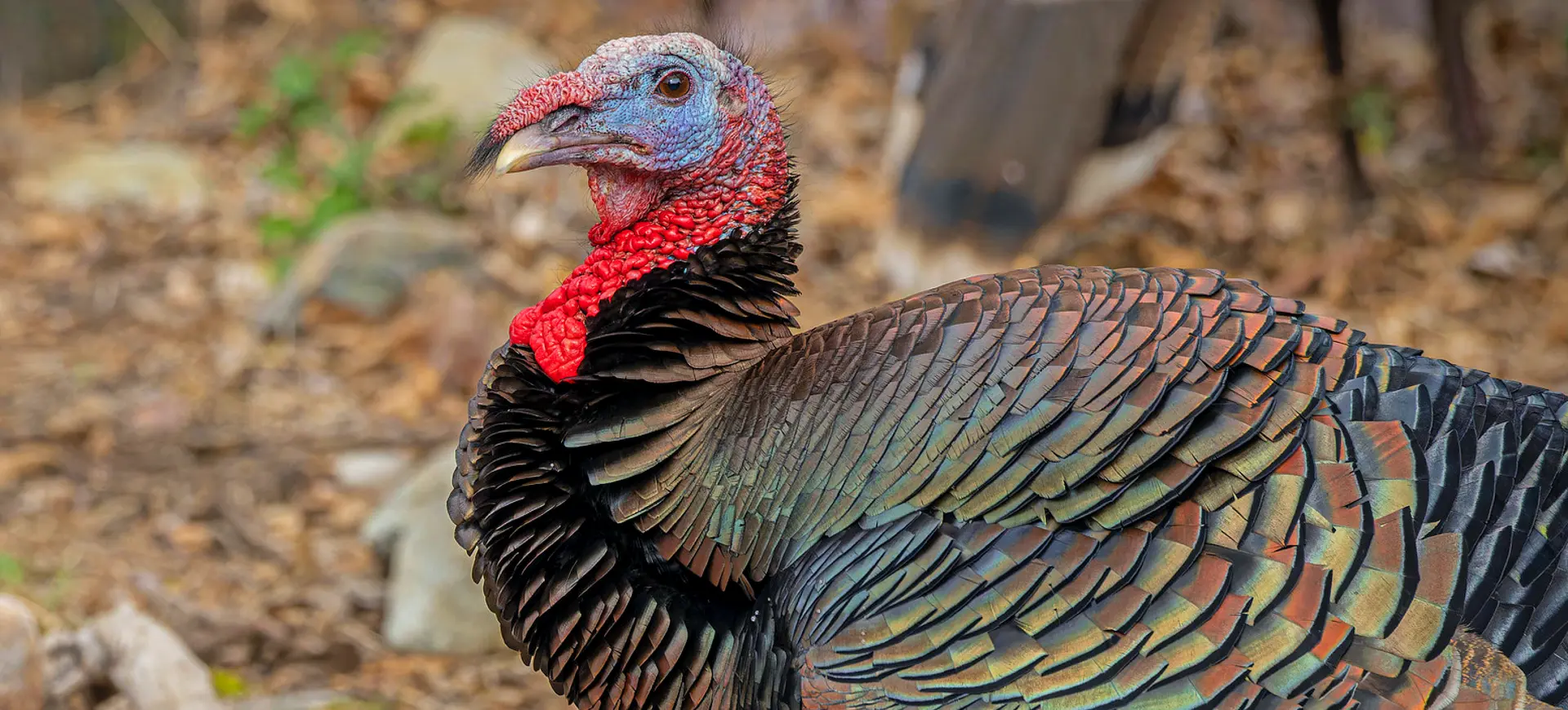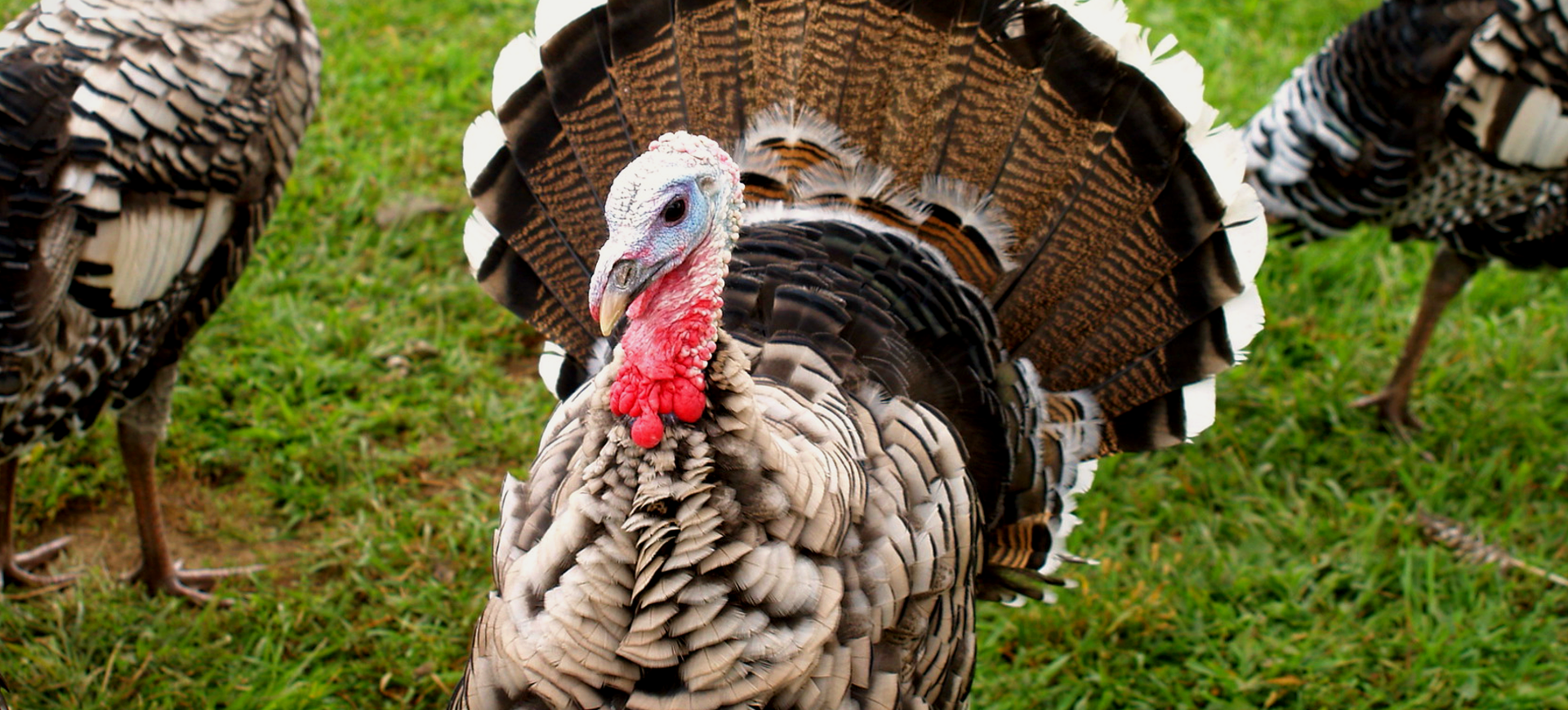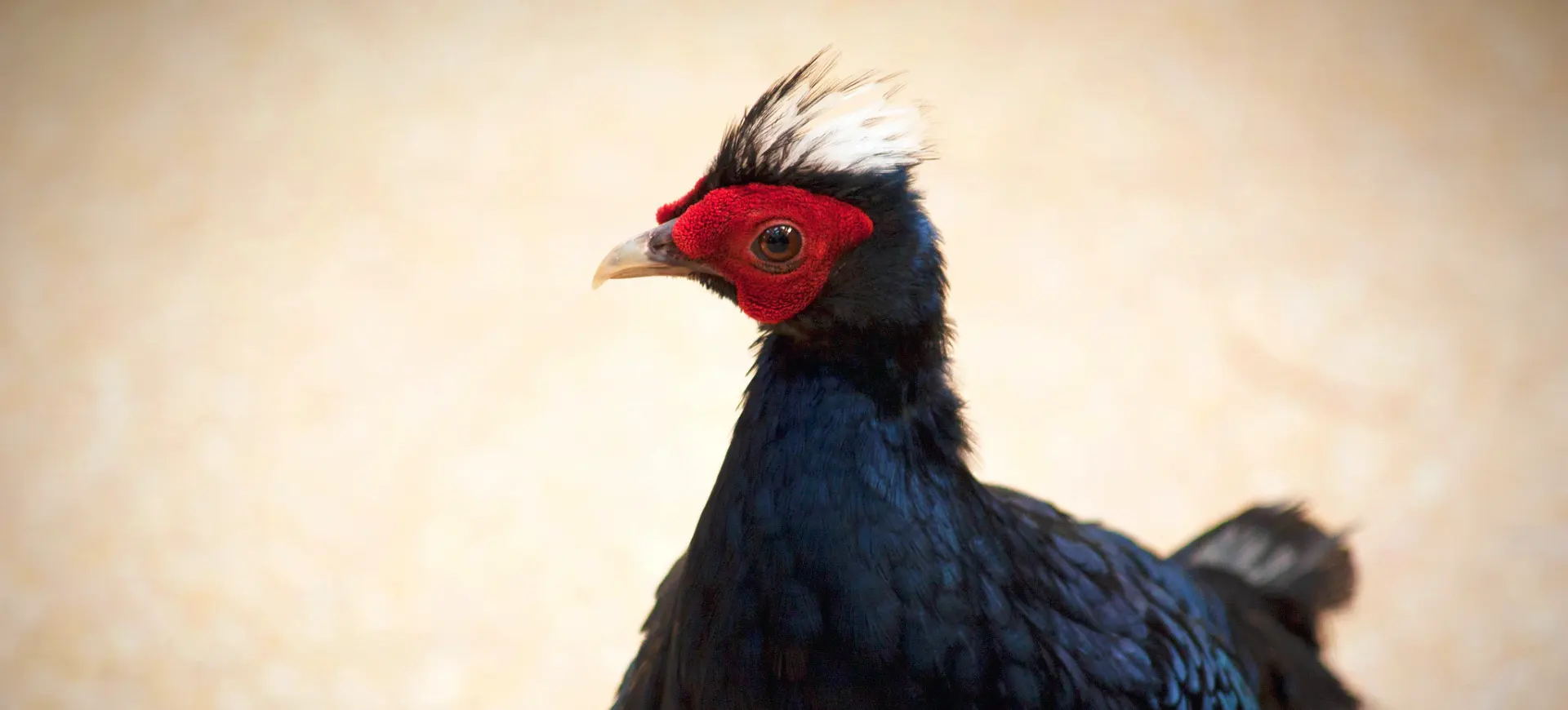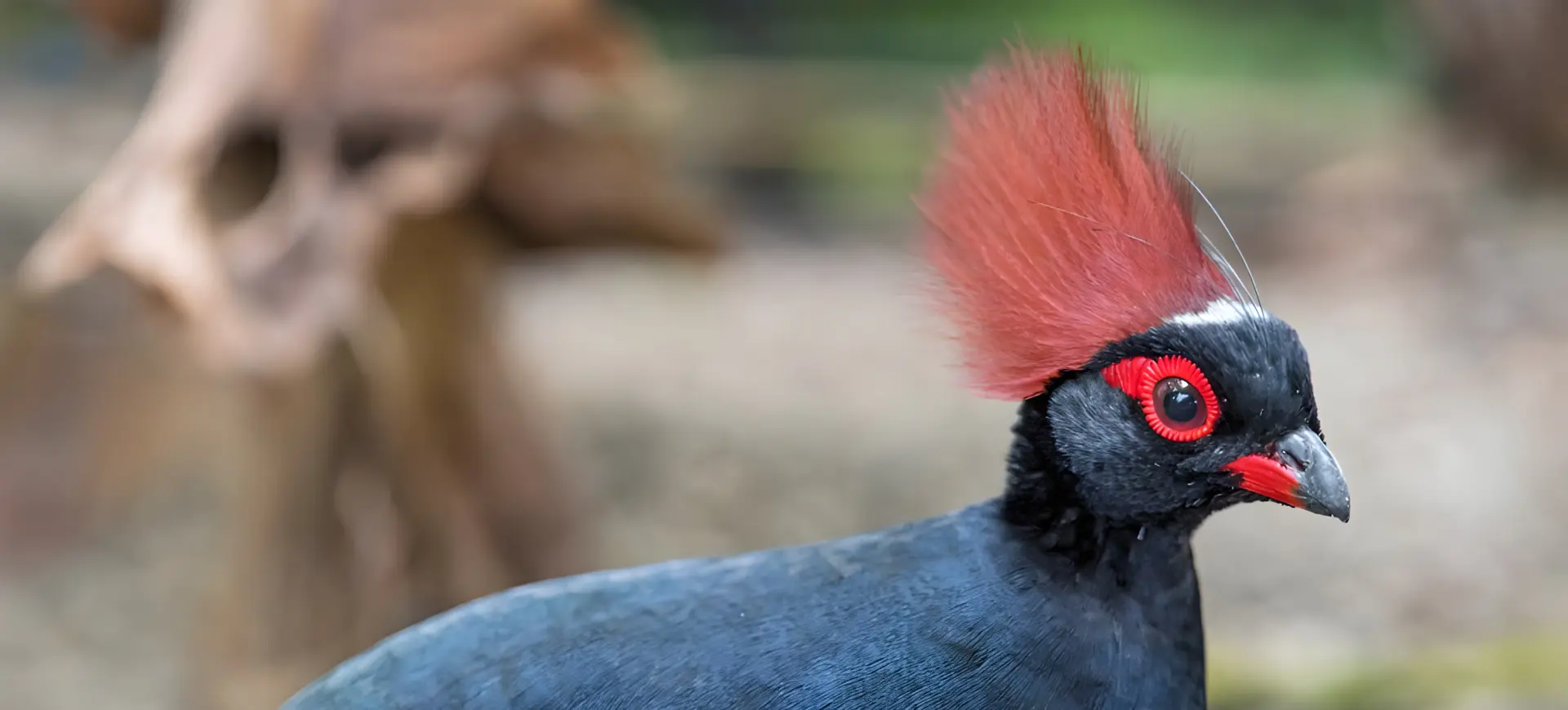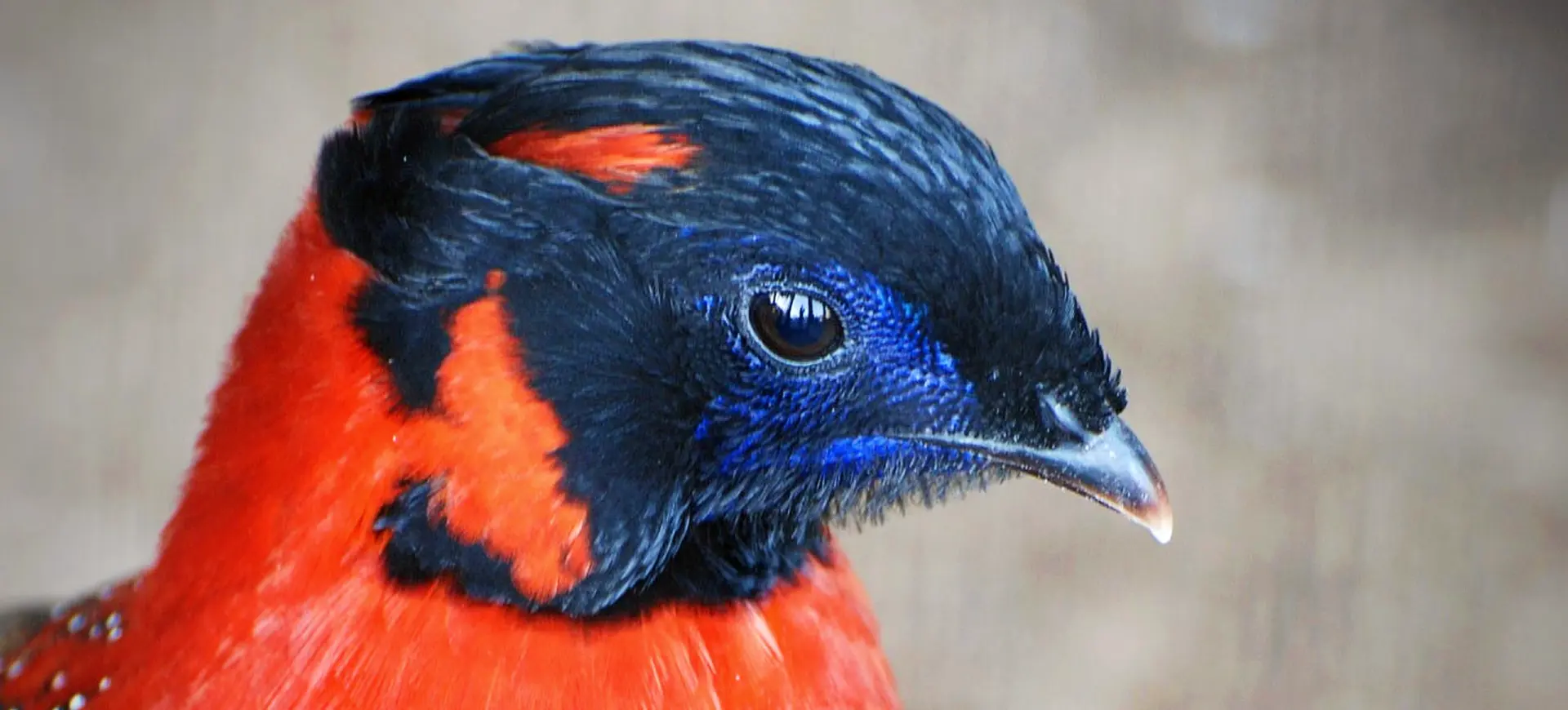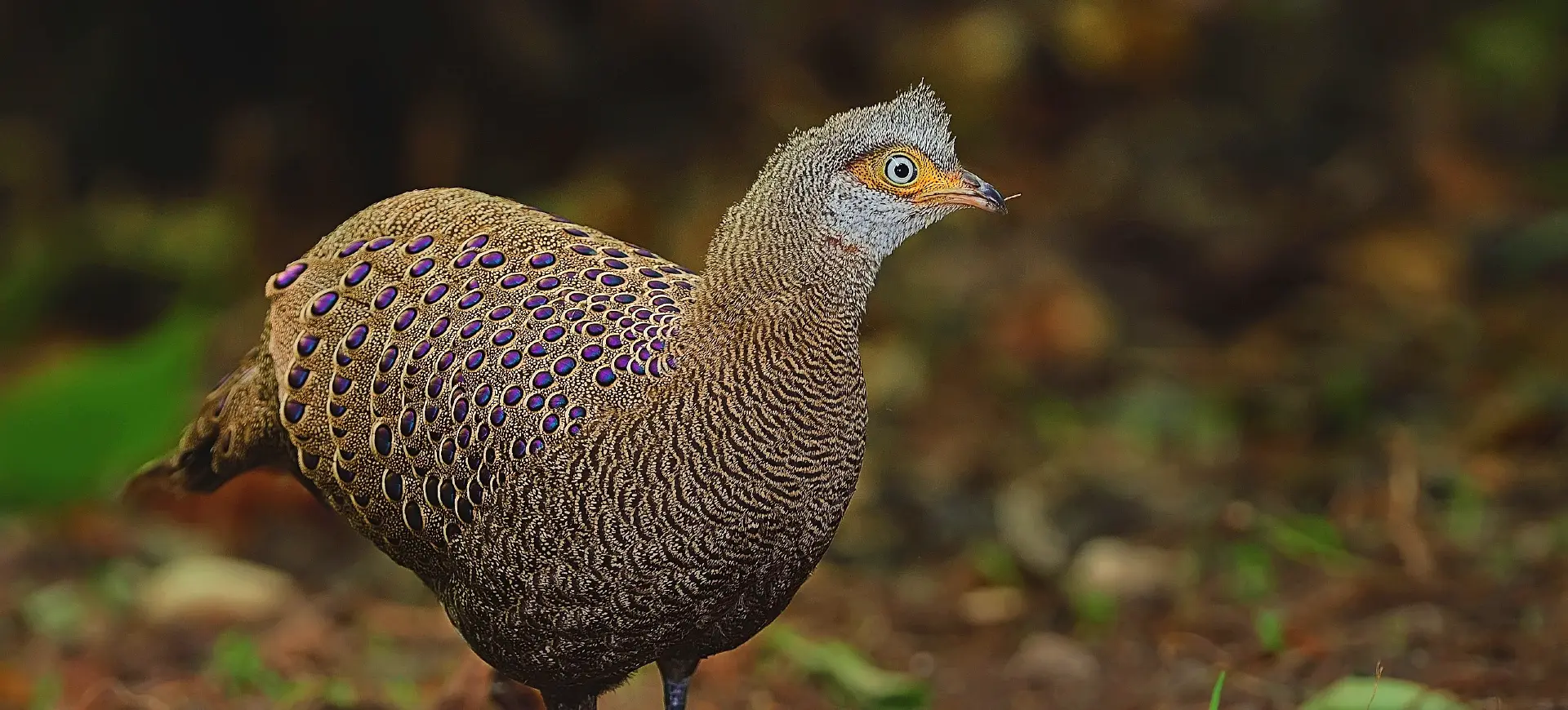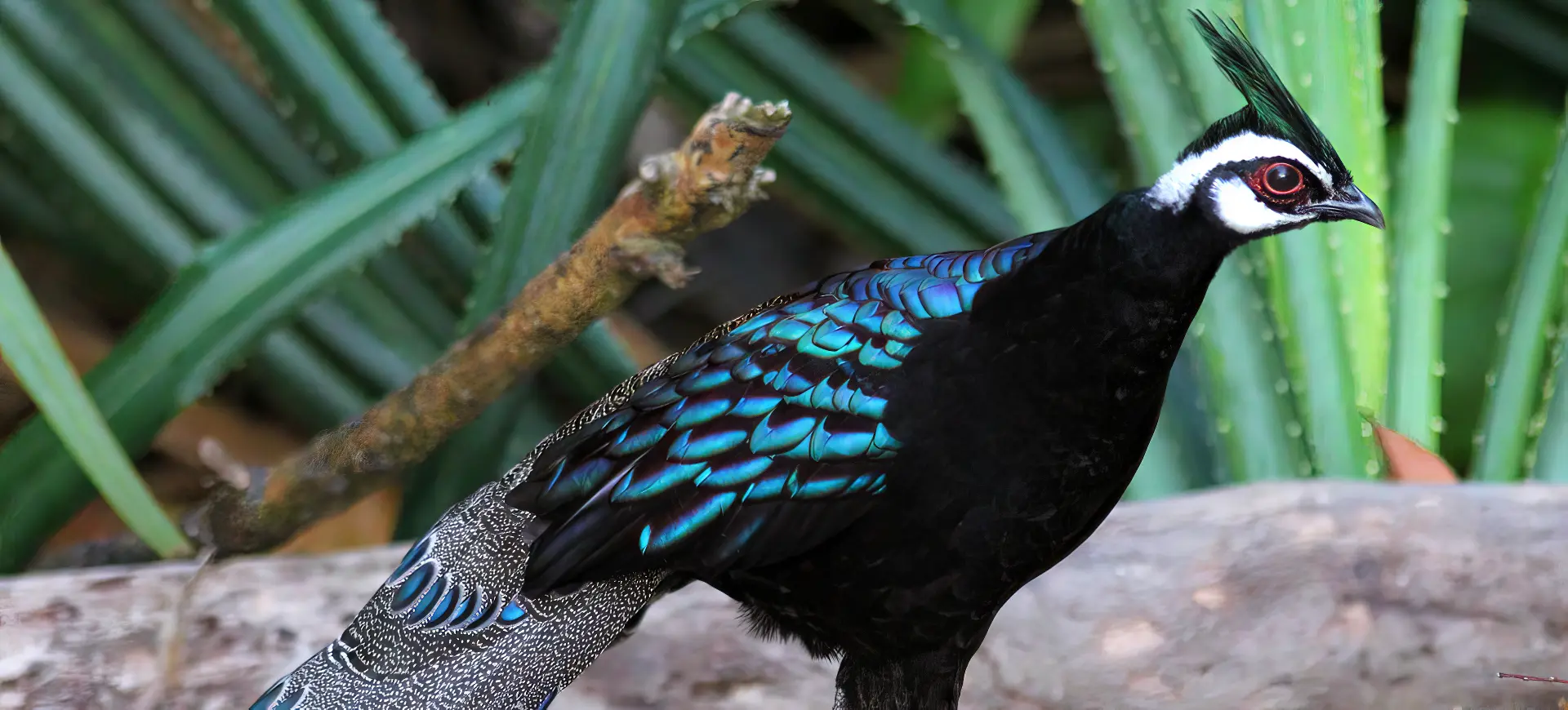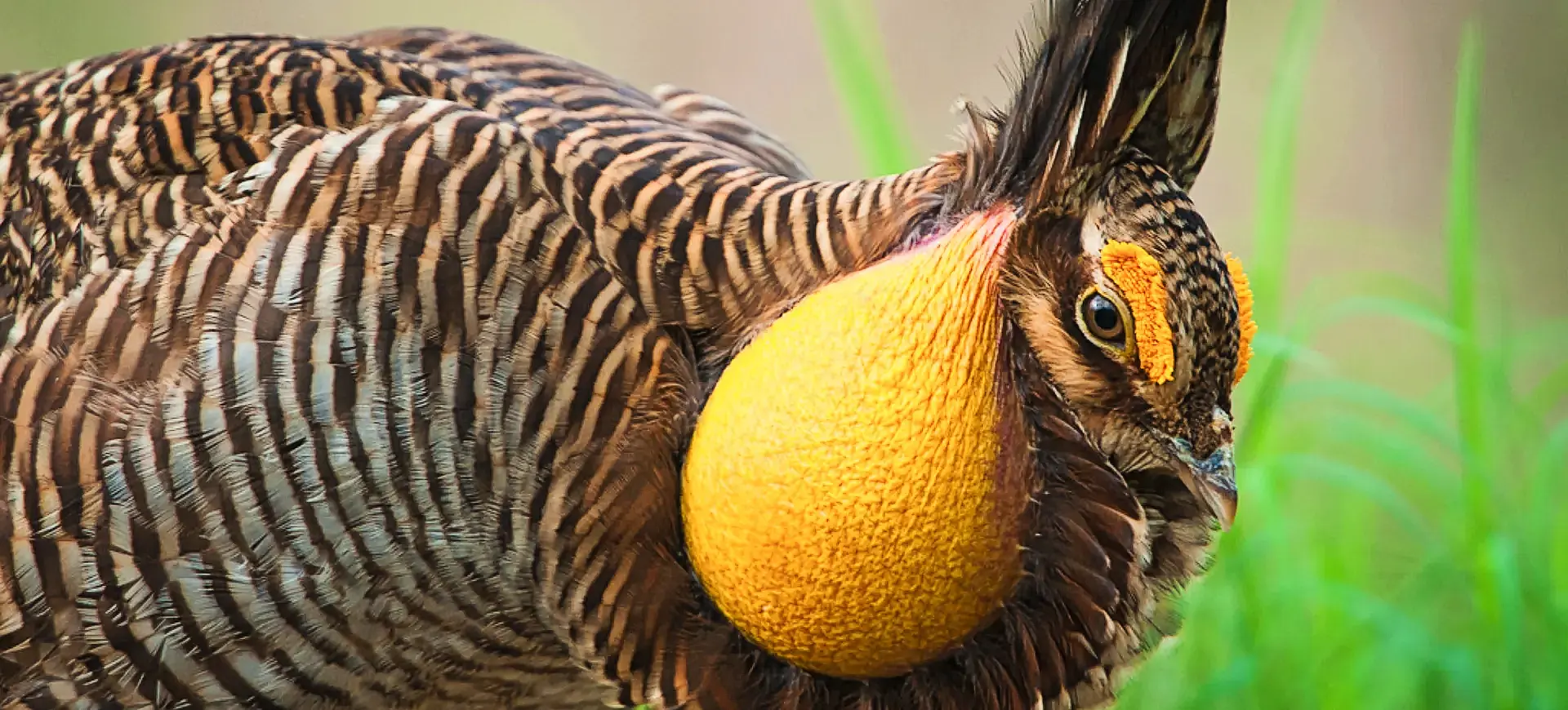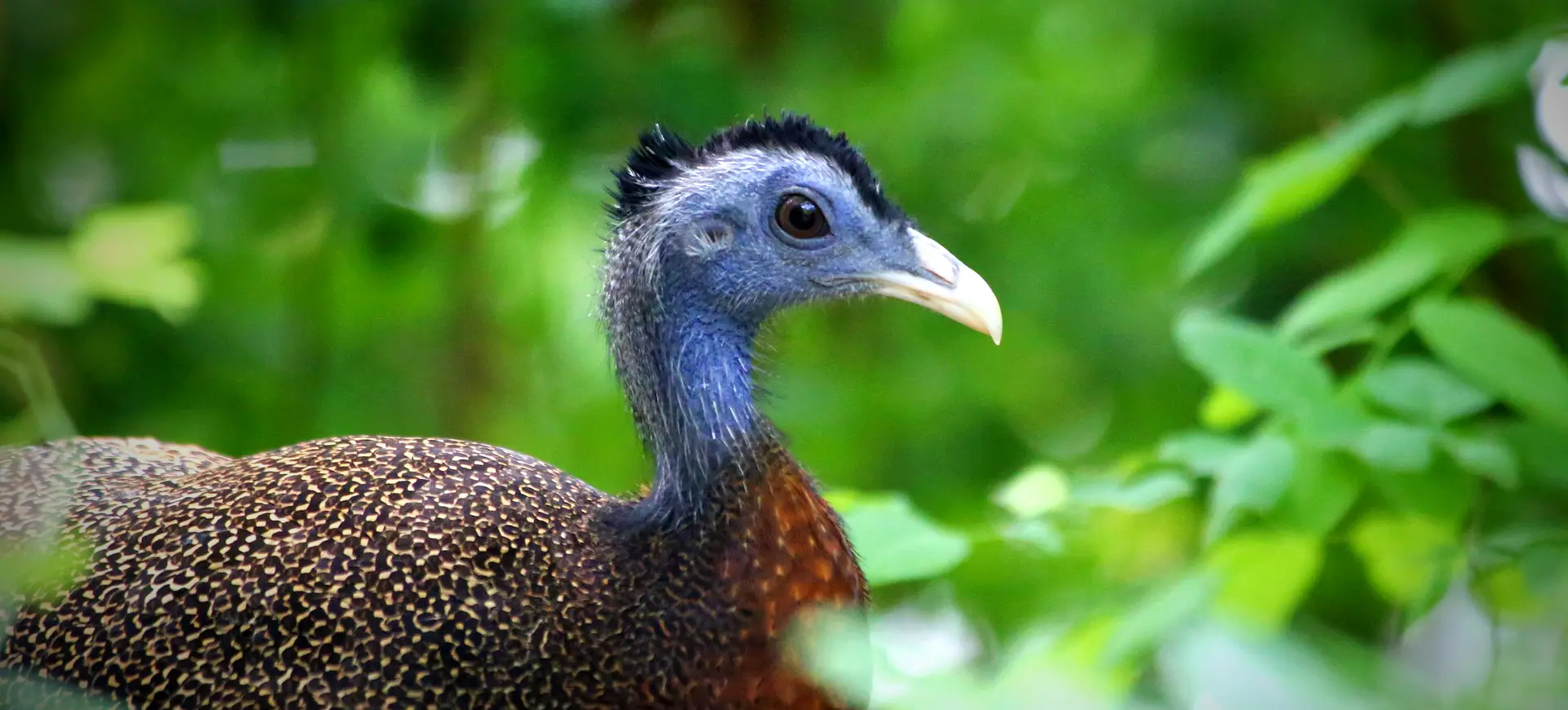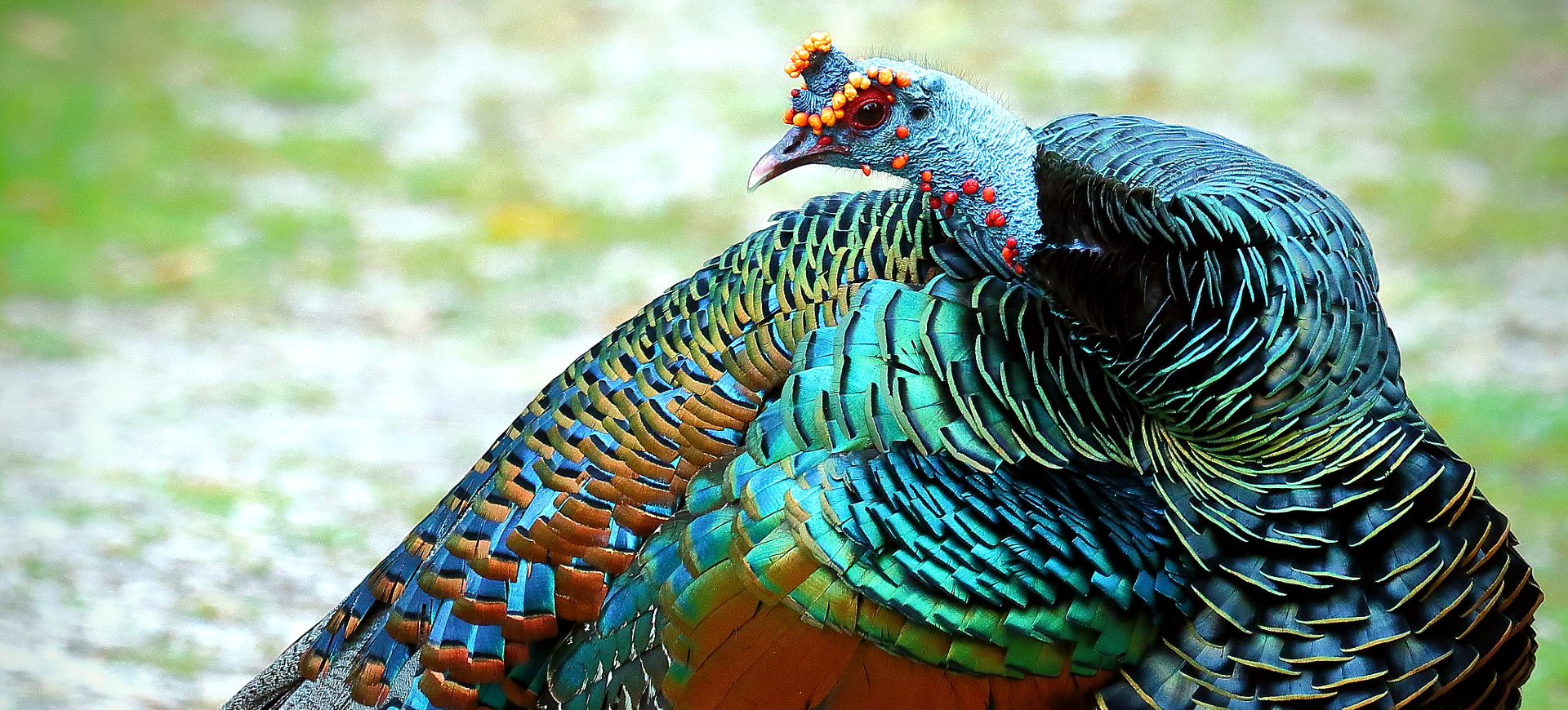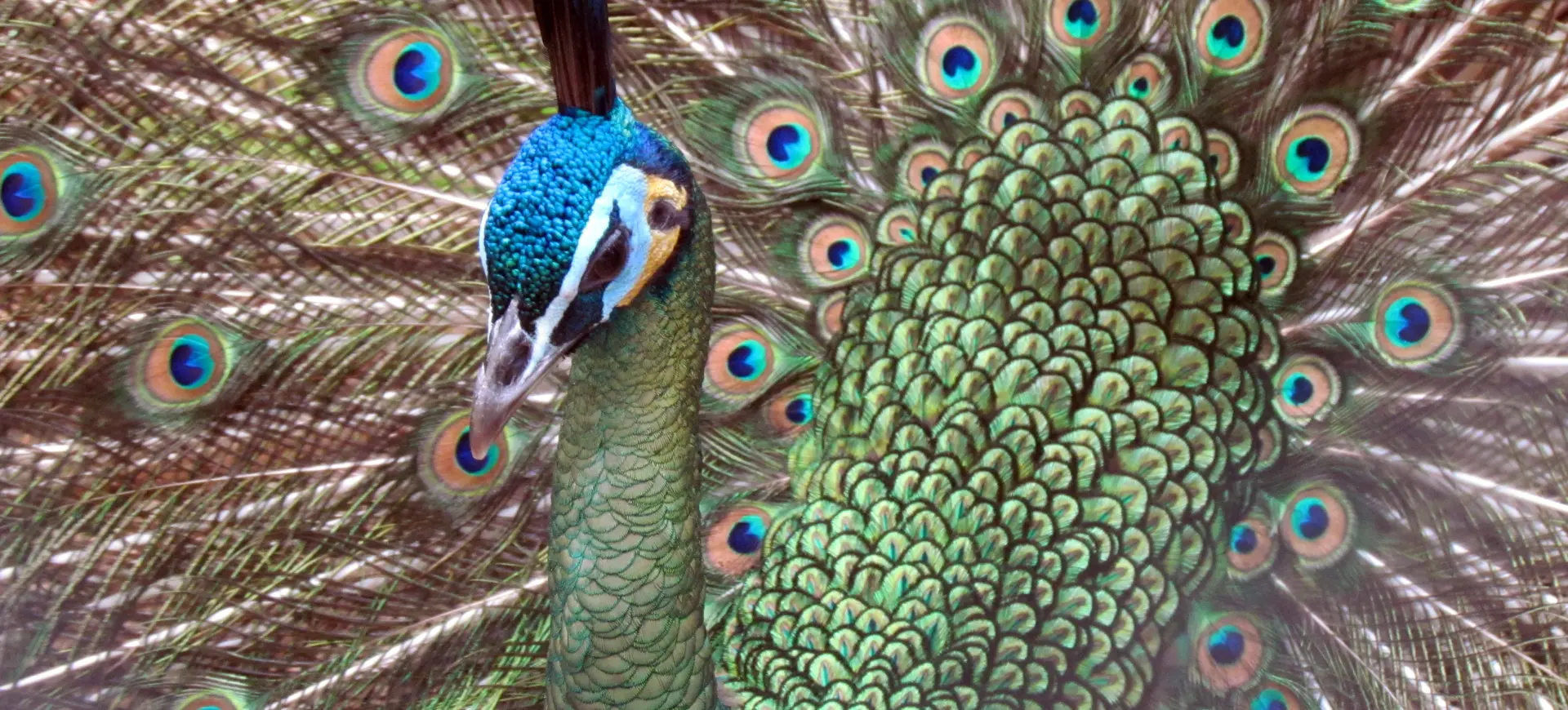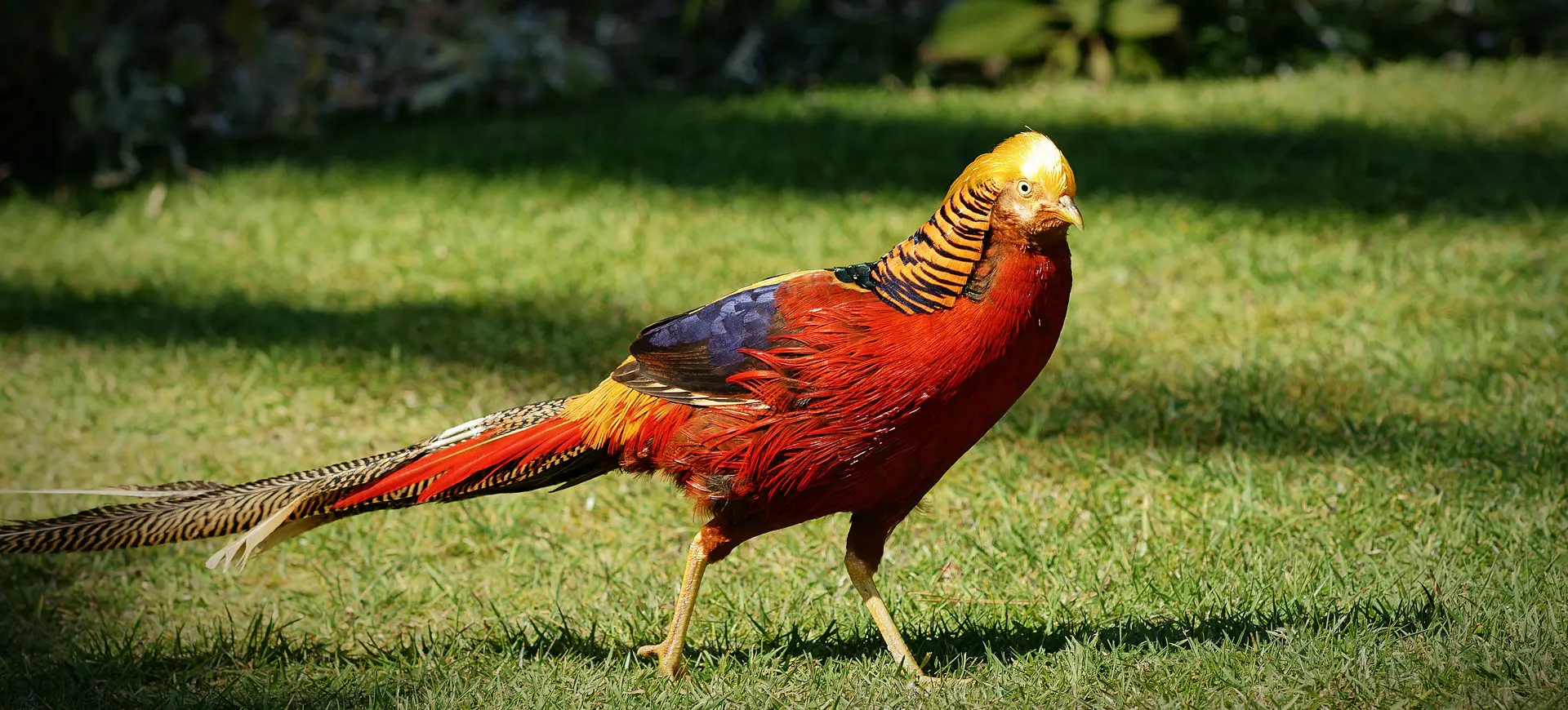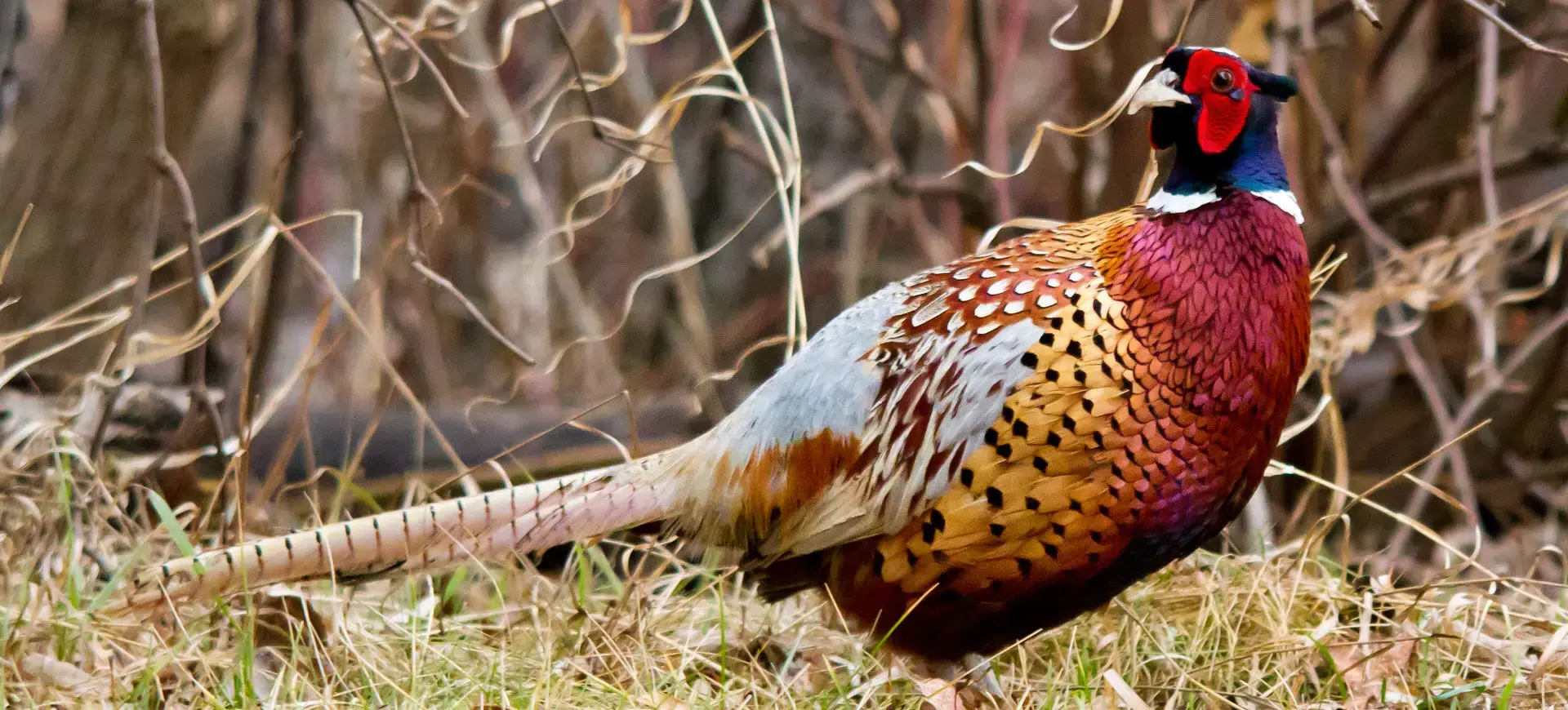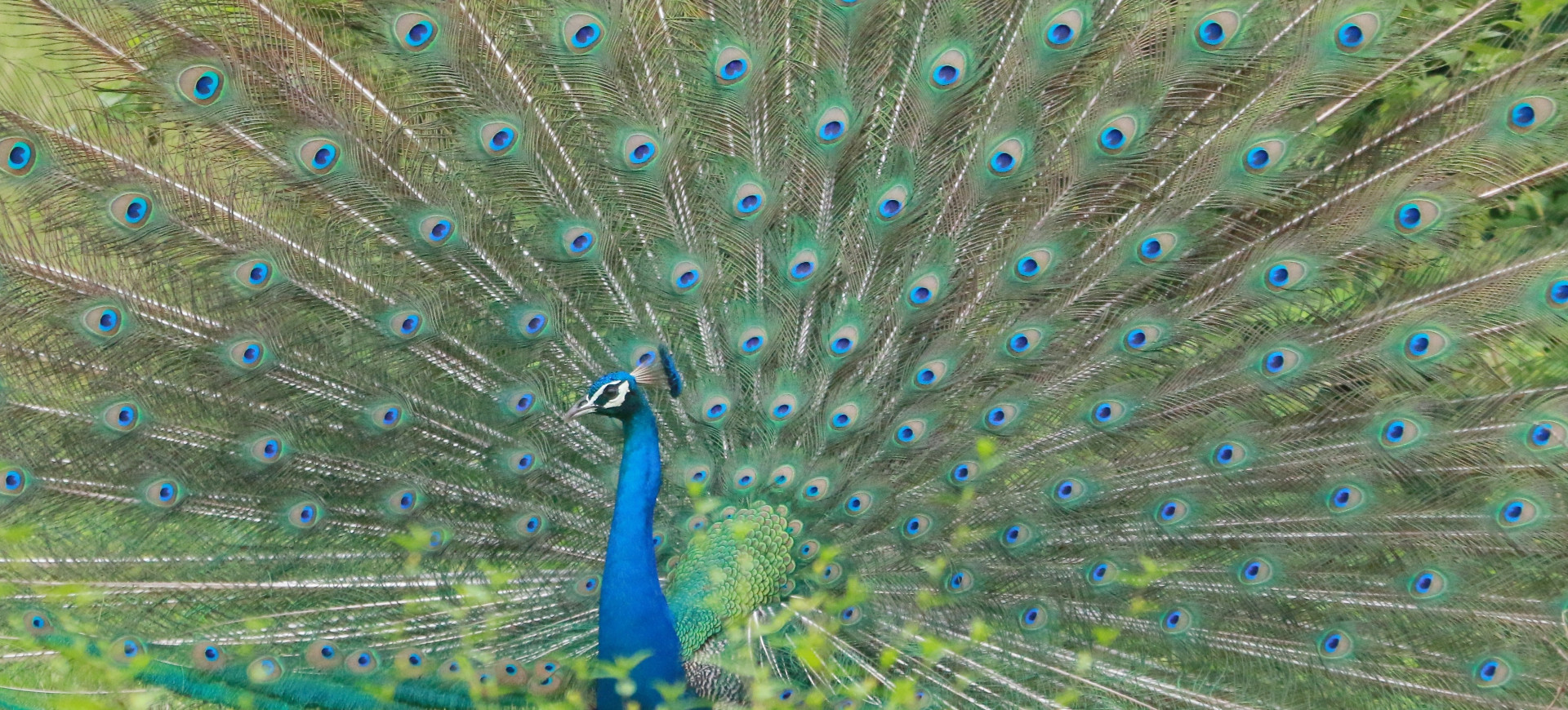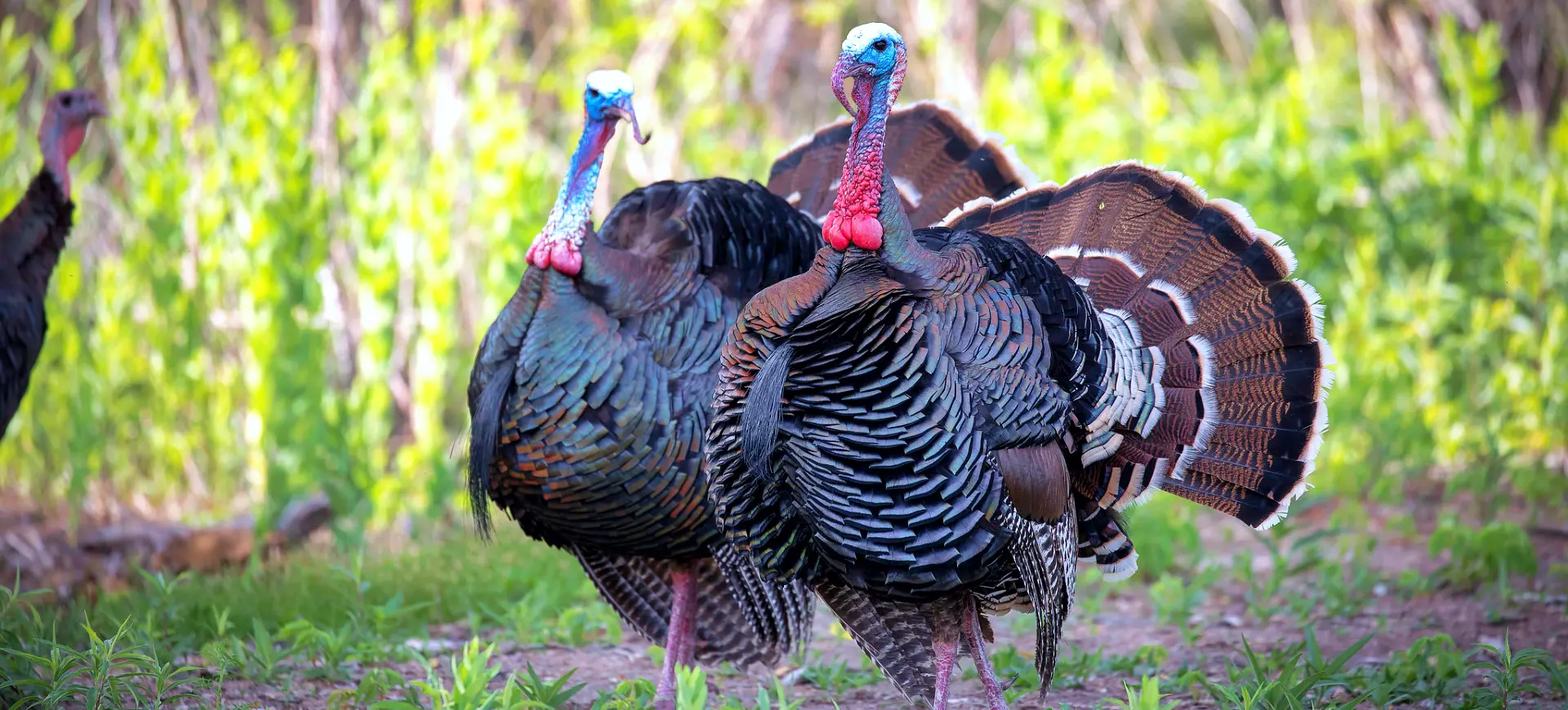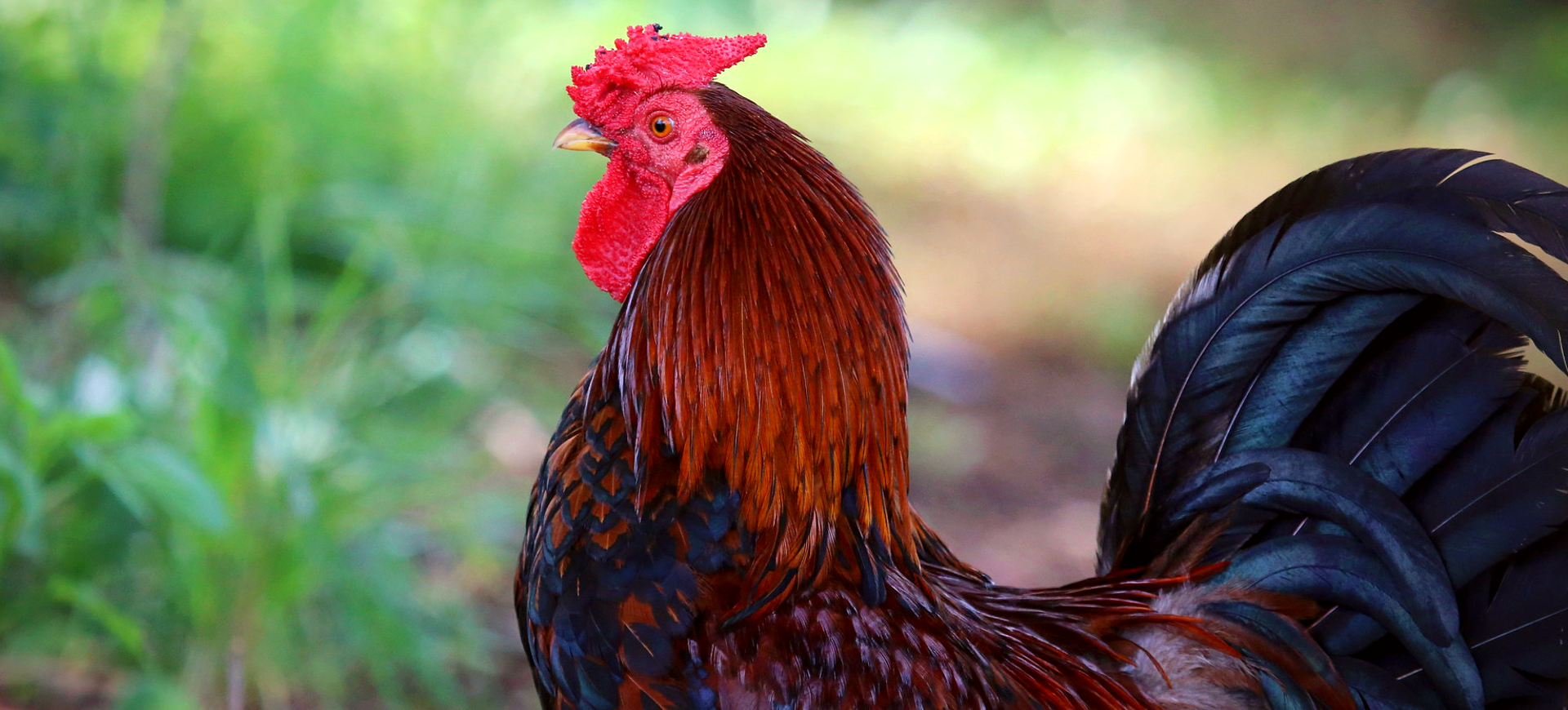Overview
Temminck’s Tragopan (Tragopan temminckii) is a medium-sized, brightly colored pheasant found in the mountainous forests of Asia. Recognized for its striking appearance, the male boasts a brilliant blue face and a distinctive red and orange plumage with white spots, resembling pearls, across its body. The female, in contrast, has a more subdued coloration, primarily brown with white spots, which aids in camouflage. This species is named after the Dutch zoologist Coenraad Jacob Temminck, highlighting its prominence in ornithological studies.
These birds are known for their remarkable courtship display, where the male extends a blue, balloon-like wattle from its throat and a horn-like structure above its head, creating a stunning visual spectacle. Temminck’s Tragopans are shy and elusive, preferring dense bamboo thickets and rhododendron forests at 2,000 to 4,000 meters. Their diet mainly consists of fruits, leaves, and insects, which they forage from the forest floor.
Adapted to life in rugged terrain, Temminck’s Tragopans are skilled climbers, often roosting in trees to avoid predators. Despite their bright colors, they blend well into the forest underbrush, making them difficult to spot in the wild. Conservation efforts are crucial for this species due to habitat loss and hunting pressures, although they are still relatively widespread within their range.
Taxonomy
Kingdom
Phylum
Class
Order
Family
Genus
Species
Type
Physical Description:
Temminck’s Tragopan is distinguished by its vibrant plumage and unique facial features. The male’s plumage is a dazzling display of red and orange, adorned with white, pearl-like spots, a characteristic that significantly enhances its allure during the breeding season. The blue facial skin, which can be inflated during courtship displays, along with the crimson wattle, makes it one of the most visually striking birds in its habitat.
Females are considerably less colorful, with a brownish body dotted with white spots, allowing them to blend into the forest floor, especially when nesting. Both sexes have short, rounded wings and strong legs, indicative of their ground-dwelling habits, although they are capable of short bursts of flight when startled. The species’ adaptation to its mountainous environment is evident in its physical build, designed for maneuvering through dense underbrush and climbing steep terrains.

Lifespan: Wild: Unknown || Captivity: ~20 Years

Weight: Male: 2.9-4.4 lbs (1.3-2 kg) || Female: 2.2-3.3 lbs (1-1.5 kg)

Length: Male: 23-25 inches (58-64 cm) || Female: 21-23 inches (53-58 cm)
Characteristic:
Native Habitat:
Temminck’s Tragopan inhabits the montane forests and bamboo thickets of the Himalayas, ranging from northeastern India through Bhutan, northern Myanmar, and central China. Their preferred habitats are characterized by dense vegetation and a rugged landscape, providing the cover and the vertical stratification necessary for their feeding and breeding behaviors. These birds are found at 2,000 to 4,000 meters at elevations, where they utilize the varying altitudes seasonally to access food and nesting sites.
The species’ reliance on dense forest habitats makes it vulnerable to deforestation and habitat fragmentation. Despite these challenges, Temminck’s Tragopans have shown resilience by inhabiting protected areas and regions where traditional forestry and agricultural practices minimize habitat destruction.
Climate Zones:
Biomes:
Biogeographical Realms:
Continents:
Diet:
Diet & Feeding Habits:
Temminck’s Tragopan’s diet primarily consists of foliage, fruits, seeds, and occasionally insects, which it forages from the ground and low-lying bushes. They are particularly fond of berries and the leaves of rhododendrons and bamboo, which are abundant in their montane forest habitats. The bird’s foraging behavior reflects its adaptability to seasonal changes in food availability, with a diet that includes more insects and less vegetation during the breeding season.
Their feeding strategy involves scratching the forest floor with their strong legs to uncover hidden food sources. This opportunistic feeding habit ensures they meet their nutritional needs throughout the year despite the seasonal challenges posed by their high-altitude environments.
Mating Behavior:
Mating Description:
The mating behavior of Temminck’s Tragopan is notable for its dramatic and colorful courtship displays. Males perform a captivating dance, inflating their blue throat wattles and erecting the feathers around their heads to attract females. This display is often accompanied by vocal calls that echo through their forest habitat. The breeding season occurs in the spring, with abundant food, supporting the energy-intensive process of mating and rearing young.
Females lay 2 to 4 eggs in a well-hidden nest on the ground, usually sheltered by dense vegetation or among tree roots. The incubation period lasts about 28 days, during which the female solely tends to the eggs, relying on her cryptic plumage for camouflage. Chicks are precocial, able to feed themselves shortly after hatching, but remain under the protection of their mother for several weeks until they are strong enough to fend for themselves.
Reproduction Season:
Birth Type:
Pregnancy Duration:
Female Name:
Male Name:
Baby Name:
Social Structure Description:
Temminck’s Tragopans are solitary or found in pairs, especially during the breeding season. They exhibit territorial behavior, with males defending their display areas against rivals. Outside of the breeding season, these birds may form small groups, particularly in abundant food areas.
Their social interactions are primarily observed during breeding when males engage in elaborate displays to attract females. The species’ solitary nature and preference for dense forest habitats make them challenging to observe in the wild, contributing to the mystique of these colorful birds.
Groups:
Conservation Status:
Population Trend:
Temminck’s Tragopan populations are considered stable in protected areas but are declining in regions affected by habitat loss and hunting. The species’ preference for dense, high-altitude forests has provided some protection from human activities, but ongoing deforestation and land conversion for agriculture pose significant threats. Conservation efforts, including habitat preservation and anti-poaching measures, are critical to maintaining stable populations.
The establishment of protected areas and the implementation of sustainable forestry practices have been beneficial. However, continued monitoring and conservation actions are necessary to ensure the species’ long-term viability, especially outside protected regions.
Population Threats:
The primary threats to Temminck’s Tragopan include habitat loss due to deforestation for timber extraction and agricultural expansion. Hunting for food and feathers also poses a significant risk in some areas of its range. Additionally, habitat fragmentation isolates populations, reducing genetic diversity and increasing vulnerability to environmental changes and disease.
Conservation initiatives aimed at protecting forests and regulating hunting are essential for the survival of this species. Public awareness and community involvement in conservation are also crucial in mitigating the impacts of human activities on their habitats.
Conservation Efforts:
Conservation efforts for Temminck’s Tragopan focus on habitat protection and management, including establishing protected areas and enforcing hunting regulations. Efforts to reforest and connect fragmented habitats are also underway to maintain a genetic flow between populations. Conservation education programs raise awareness about the species and its ecological role, promoting coexistence and support for conservation measures.
Collaboration between conservation organizations, governments, and local communities is key to effectively protecting Temminck’s Tragopan and its habitat. These collective efforts are essential for preserving the species amidst ongoing environmental and human pressures.
Additional Resources:
Fun Facts
- Temminck’s Tragopan is often considered one of the most beautiful pheasants in the world due to its vibrant colors.
- The species is named after Coenraad Jacob Temminck, an influential Dutch zoologist of the 19th century.
- Their unique courtship display, involving the inflation of throat wattles and erecting head feathers, is a remarkable sight in the animal kingdom.
- Despite their bright colors, their plumage provides excellent camouflage in the dappled light of their forest habitats.
- Temminck’s Tragopan can climb trees, an unusual behavior for a bird primarily adapted to ground living.
- They can make various sounds, including whistles and clucks, which are used for communication, especially during the breeding season.
- Conservation programs focus on habitat protection and anti-poaching efforts to safeguard the future of this spectacular species.
- The bird is featured in the folklore and myths of several cultures within its range, often symbolizing beauty and mystery.
- In captivity, they require specialized diets and environments that mimic their natural habitat to thrive.
- The success of conservation efforts for Temminck’s Tragopan is seen as a key indicator of the health of the montane forest ecosystems they inhabit.






